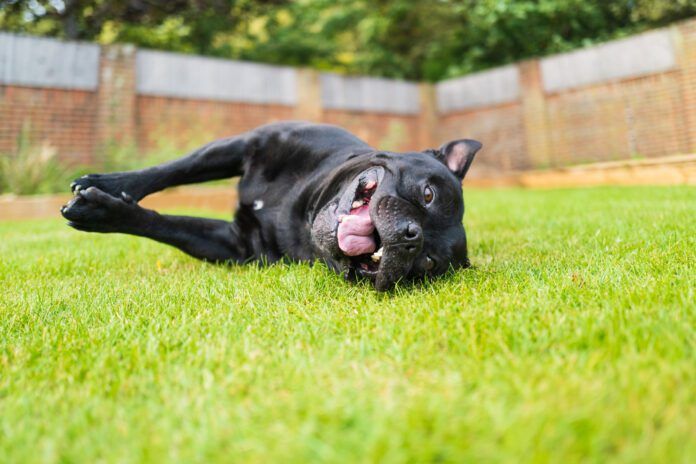Watching your dog have a seizure or an episode of syncope can be a scary experience, and these events can look very similar. We discussed seizures and their causes here. But the causes and treatment of syncope episodes are different, so it is important to know how to tell them apart.
Syncope:
- Syncope episodes are often preceded by excitement, exercise, or coughing.
- Dogs who have a syncope episode will lose consciousness and fall to one side.
- Their limbs may become stiff and rigid and they may briefly cry out.
- Sometimes their limbs may convulse once or twice.
- They may urinate or defecate during the episode.
- Syncopal episodes typically last only a few seconds, after which the dog will regain consciousness and act like nothing happened (extremely short recovery).
Seizures:
- Seizures are typically not preceded by excitement or exercise.
- Seizures may be preceded by a pre-ictal phase, also known as an aura.
- During a tonic-clonic seizure, a dog’s limbs will repetitively convulse (not just once or twice, as with syncope).
- Their jaws will rapidly clench and relax and they may foam at the mouth.
- They may involuntarily urinate and defecate.
- After the seizure has occurred, dogs will experience a post-ictal phase. During this phase, dogs may be confused or disoriented and they may either be restless or extremely sleepy (slow and prolonged recovery).
Any dog who is having seizures or syncope should be evaluated by their veterinarian as soon as possible. Taking a video of the event with your smartphone and sharing it with your dog’s veterinarian can help to differentiate if your dog is having seizures or syncope.
Causes of syncope in dogs
The most common cause of syncope is a sudden and temporary interruption of blood flow to the brain. Both structural and electrical abnormalities of the heart can cause a sudden reduction in the amount of blood the brain receives.
Syncope is more common in senior dogs than younger dogs, because the problems that cause syncope become more common as dogs age.
Structural abnormalities of the heart inhibit the heart’s ability to contract and move blood forward through the body. These problems can be congenital, such as heart valve defects of the pulmonic or aortic valves. Some structural abnormalities – including dilated cardiomyopathy and arrhythmogenic right ventricular cardiomyopathy (ARVC) – are not present at birth but are more likely to develop in certain breeds of dogs. Genetically inherited dilated cardiomyopathy affects primarily Doberman Pinschers, Great Danes, and Boxers. Both Boxers and Bulldogs can be affected by ARVC.
Structural cardiac abnormalities can also be acquired as a result of heartworm disease, mitral and tricuspid valve disease, or pulmonary hypertension. A condition called pericardial effusion, an accumulation of fluid between the outside of the heart and the inside of the sac that surrounds the heart, can also syncope, by increasing the pressure on the heart muscle and impairing its ability to contract.
Electrical abnormalities of the heart impair the movement of electrical impulses that originate in a cluster of cells in the right atrium and travel through the atria and ventricles. Without proper electrical impulses, the heart may not completely contract with each beat. This is called an arrhythmia. Arrhythmias can cause a temporary impairment of blood flow to the brain.
Diagnosing the cause of syncope
If your veterinarian suspects that a heart condition is causing your dog’s episodes of syncope, she may order diagnostic tests that examine your dog’s heart structure and electrical function. These may include thoracic radiographs (chest x-rays), an electrocardiogram (ECG), and an echocardiogram (ultrasound of the heart).
Some arrhythmias are intermittent and may not be seen on an ECG in the veterinarian’s office. If your dog’s veterinarian suspects that your dog has an intermittent arrhythmia, she may order a Holter monitor for your dog. This device records the electrical activity of your dog’s heart over a 24-hour period.
A Holter monitor for dogs is similar to a Holter monitor for people. Small areas on your dog’s chest are shaved and ECG patches are applied. The ECG patches are connected to the Holter monitor via a set of wires. Your dog will wear a special shirt to cover and protect the ECG patches. The shirt includes a velcroed pouch that contains the Holter monitor, which is no bigger than a deck of playing cards.
You will be asked to complete a log of your dog’s activities over the 24 hours that your dog wears the recording device. At the end of this period, the Holter monitor and your dog’s activity log are submitted to a veterinary cardiologist for interpretation.
There are several medications that can help your dog’s heart work more efficiently when there is an abnormality. The key is finding the correct diagnosis so that the appropriate medications can be prescribed.
Other causes of syncope in dogs
Low blood sugar, acute blood loss, and severe dehydration can also cause syncope. Hypoxemia (low levels of oxygen in the blood) caused by severe lung disease, acute onset of profound anemia, or a congenital defect of the heart called a shunt may result in syncopal episodes. These conditions can also lead to seizures if left untreated.
There is a condition called neurocardiogenic syncope (also known as vasovagal syncope) in dogs. The condition is not well understood as of this writing. Dogs with this condition have a syncopal episode following a bout of coughing, gagging or vomiting or during a period of exercise or excitement. The current theory is that pre-syncopal activity causes an abrupt drop in heart rate and blood pressure, resulting in an interruption of blood flow to the brain. As with certain cardiac arrhythmias, a Holter monitor may be necessary to diagnose the underlying cause of neurocardiogenic syncope.
There are many causes of syncope in dogs. But the frequency of syncopal episodes can be reduced or even eliminated once the underlying cause is properly diagnosed and treated.
| Syncope | Seizure | |
| Collapsing onto their side | ✔ | ✔ |
| Stiffness of the limbs | ✔ | |
| Arching of the neck and back | ✔ | |
| Crying out | ✔ | |
| Paddling of the limbs | ✔ | ✔ |
| Involuntary urination or defecation | ✔ | |
| Frothing at the mouth | ✔ | |
| Rapid clenching and unclenching the jaw | ✔ | |
| Disorientation after the event | ✔ | |
| Coughing, gagging, vomiting, excitement, or exercise immediately before event | ✔ |






